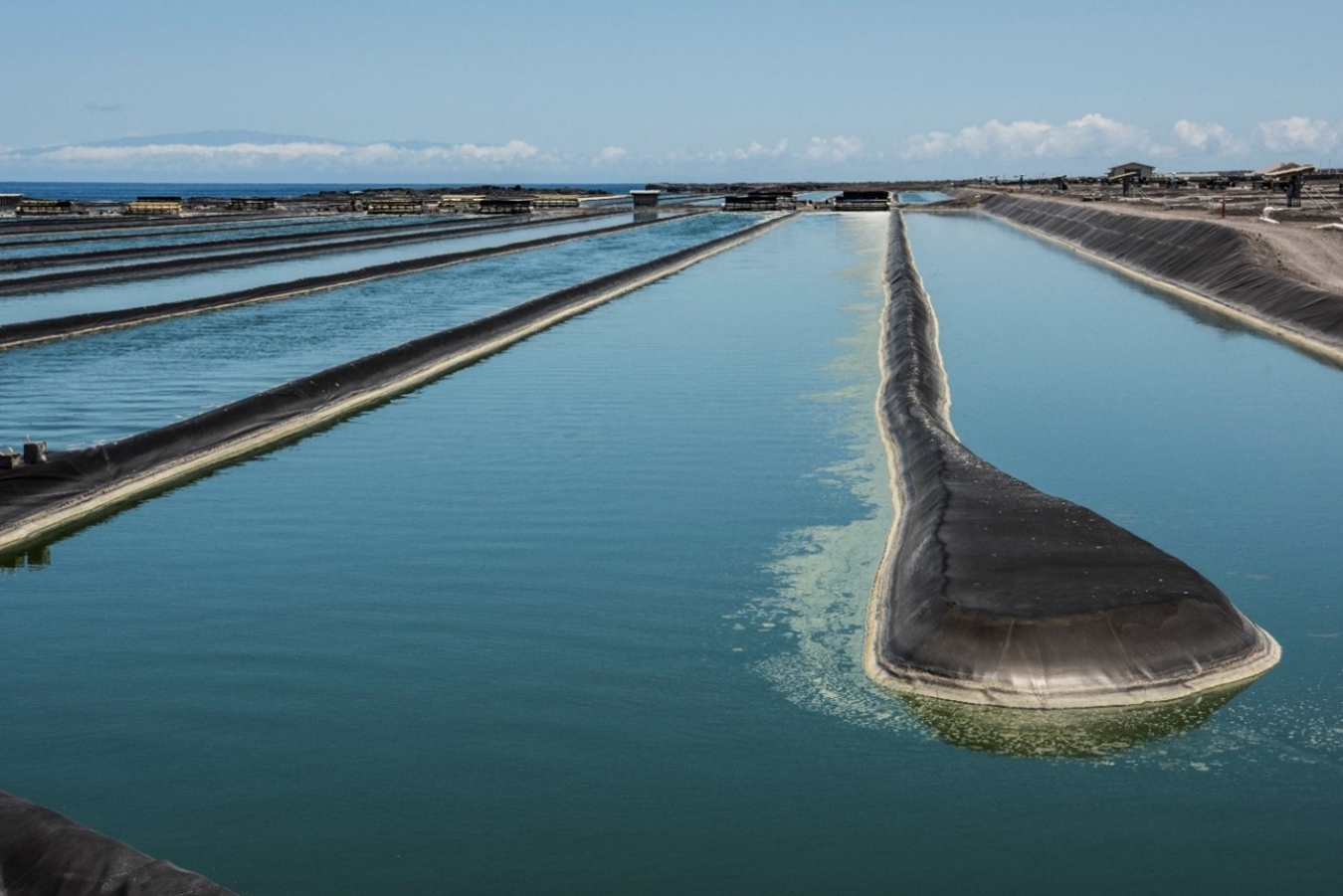A new report from the U.S. Department of Energy (DOE) national laboratories investigated the economic and environmental implications of siting and deploying large-scale microalgae farms for cultivation and conversion to biofuels and bioproducts. The report, “Economic, Greenhouse Gas, and Resource Assessment for Fuel and Protein Production from Microalgae: 2022 Algae Harmonization Update,” was developed by Argonne National Laboratory, National Renewable Energy Laboratory, and Pacific Northwest National Laboratory, with funding from DOE’s Bioenergy Technologies Office (BETO).
July 24, 2024
An example of Cyanotech’s microalgae cultivation raceway farm on the island of Hawaii. Photo by Dennis Schroeder/National Renewable Energy Laboratory.
A new report from the U.S. Department of Energy (DOE) national laboratories investigated the economic and environmental implications of siting and deploying large-scale microalgae farms for cultivation and conversion to biofuels and bioproducts. The report, “Economic, Greenhouse Gas, and Resource Assessment for Fuel and Protein Production from Microalgae: 2022 Algae Harmonization Update,” was developed by Argonne National Laboratory, the National Renewable Energy Laboratory, and Pacific Northwest National Laboratory, with funding from DOE’s Bioenergy Technologies Office (BETO).
The harmonization assessment report focused on the technological potential to leverage non-competing available resources for land, saline water, and industrial waste carbon dioxide (CO2) sources across the southern United States to cultivate high-protein algal biomass for conversion into products like sustainable aviation fuels (SAF) and protein for food and feed applications.
This latest analysis is reflected in BETO’s recently published 2023 Billion-Ton Report in Chapter 7: Emerging Resources: Microalgae, Macroalgae, and Point-Source Carbon Dioxide Waste Streams.
In addition, this analysis may be leveraged to help inform jet fuel production from microalgae supporting SAF Grand Challenge 2030 and 2050 goals.
Read more about the Algae Harmonization Report and learn how microalgae biomass can be scaled to a national CO2 utilization resource.

